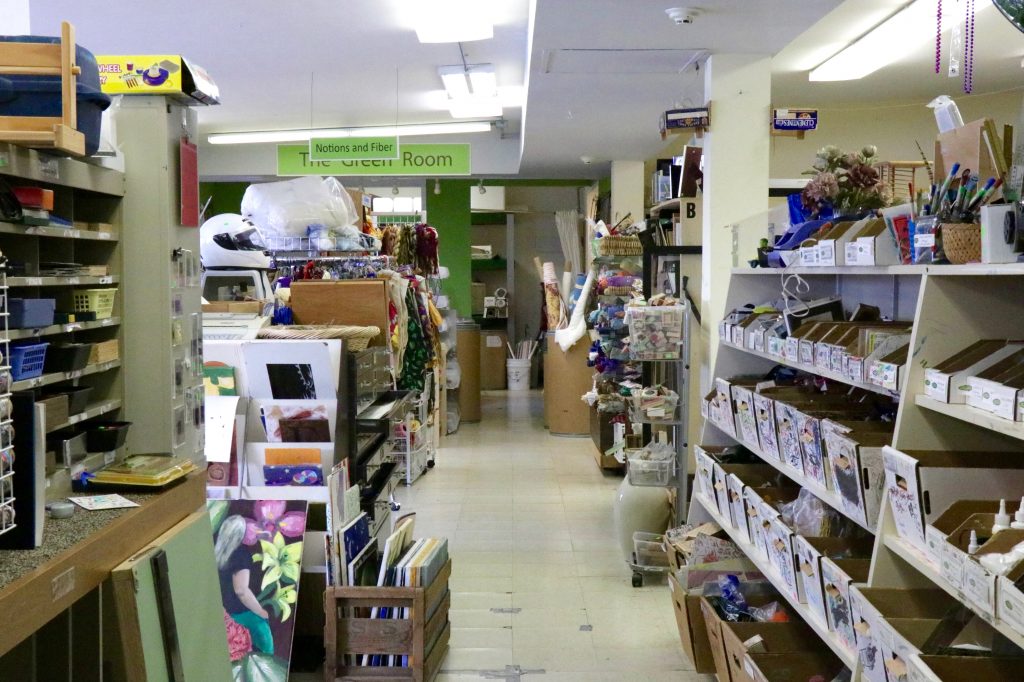The global travel sector is one of the fastest-growing, most profitable industries in the world. In fact, it’s so successful that it’s now 10.4% of global GDP ($12 trillion USD). There’s no denying that travel is both enlightening and fulfilling. Often, being a tourist leaves a lasting appreciation for the culture, diversity, and beauty of the place you visit. However, most of us don’t consider the environmental impact, which includes the trip itself as well as accommodations while we’re visiting.
What if there’s a more mindful way to travel? What if there’s a way to still have fun while also ensuring that your trip doesn’t leave a lasting impact on the environment? In recent years, an interesting sustainability-focused subsection of the tourism industry has developed that addresses those very questions. This week’s column is all about ecotourism.

Photo Courtesy of World Atlas
What is Ecotourism?
The World Conservation Union defines ecotourism as, “environmentally responsible travel to natural areas, in order to enjoy and appreciate nature (and accompanying cultural features, both past and present) that promote conservation, have a low visitor impact, and provide for beneficially active socio-economic involvement of local peoples.”
Simply put, ecotourism means creating a minimal environmental impact in order to leave a place just like you found it. A one-week trip seems harmless enough, but it’s amazing how the right combination of obliviousness and lack of consideration can lead to major destruction in just a short period of time.
The Nature Conservancy highlights a handful of key characteristics that comprise the ecotourism sector:
- Conscientious, low-impact visitor behavior
- Sensitivity towards, and appreciation of, local cultures and biodiversity
- Support for local conservation efforts
- Sustainable benefits to local communities
- Local participation in decision-making
- Educational components for both the traveler and local communities
I think it’s important to take note here of the emphasis on community. When you choose a destination, it may be a vacation to you, but for the people who live in the places you’re visiting, that’s home. Ecotourism can be as simple as respecting and being sensitive towards an area’s natural environment and people. They don’t want the beauty and character of their home to be sacrificed for increased commercialization and development.
Controversy
Despite ecotourism’s good intentions, it also has a fair number of detractors. At-risk ecosystems can become even more depleted by tourists due to the resources needed to get to one from one remote location to another. Construction of roads/lodging and increased car/air transportation can lead to loss of organic matter, reduction in soil macroporosity, decrease in air and water permeability, and reduced plant vigor, as well as increased waste problems. It also has an impact on wildlife. Human visitors can cause a shift in their feeding and mating habits, as well as increasing the likelihood of human-wildlife interactions that can lead to tragedy.
Tourism can also negatively impact the lifestyle and cultures of people living in these communities. As a destination’s popularity increases, resources tend to suffer from overuse. Towns must grow to accommodate new visitors, often resulting in an influx of hotels, restaurants, and shops. The new developments, while sometimes providing a major economic boost, often cause original residents to lose pasture and cropland and can force out local businesses. Instead of remaining in the jobs that they’ve always known, they’re forced to take low-paying service jobs in the hospitality industry. In addition, an influx of tourists can also drive up prices for the locals. Tourism can degrade not only can the identity of the natural environment, but also the daily lives of the people who make the community a spot worth visiting in the first place.

Photo Courtesy of Agriturismo
Benefits
If you’re choosing a travel destination, try to travel as sustainably as possible. Responsible Travel, an online ecotourism-based travelogue, promotes natural destinations and vacation spots while also giving tips on how to preserve and respect them. Responsible Travel’s mantra is, “if you’re going to make the decision to travel here, this is how you do it with as a little environmental impact as possible.” The website provides an extensive list of countries and destinations, vacation types, travel/restaurant guides, and reviews. They also have a section full of cool videos explaining the organization’s mission and history, ecotourism “How To’s,” and the origins and impact of overtourism.
Despite the downsides, it’s hard to deny the benefits of ecotourism. It allows communities to economically build without environmental harm. Instead of encouraging the construction of massive hotel and entertainment developments, they can promote locally-owned restaurants, mom-and-pop shops, and park/waterfront conservation. Tourism also provides much-needed revenue for the protection of national parks. This is a win-win for both locals and visitors, as wildlife will continue to be able to thrive and out-of-towners are able to experience the enchanting beauty of an untouched natural landscape. Beholding the pristine, unaltered natural beauty causes a sense of clarity and appreciation that true environmental consciousness and sustainability initiatives result in real change. Tourists may even decide to take sustainability home with them.
The Bottom Line
Everybody loves a good vacation. They’re a much-needed reprieve from a busy work schedule or hectic home life. I recently traveled to Florida before doing research for this week’s column and discovered just how easy it was to lose sight of the reason why I was really there. I became distracted by the lively restaurants, the plush hotels, and the drinks by the pool, so much so that I forgot to look outside my window. I finally realized on my last night there that the true draw of this location was the gorgeous, immaculate beach vistas, from the deep blue water to the lush expanse of sand. The natural environment was the reason for this place to genuinely be considered a destination, yet I had been distracted by the bells and whistles. Gaining an appreciation for nature can really ground you and make you realize how important it is to incorporate sustainability into your day-to-day life. The term may scare a lot of people at first, but once you start learning, you see how easy it is to understand and internalize. Just a small alteration can make a huge long-term impact. Sustainability touches everything from storytelling to breweries, to urban revitalization, to disaster risk reduction, to recycling, to fashion, to ecotourism, and everything else. It is the key to a healthier, better world.


 Photo Courtesy of Fashionista
Photo Courtesy of Fashionista 



 The IDEA Store won’t be located at its current Springfield Avenue location for much longer. Morgan and team are in the process of transitioning the store to a new location at Lincoln Square Mall in Urbana. To accommodate an exponential growth in donations, the Lincoln Square storefront will be three times larger than the current location. This will allow excess items currently stored in the warehouses to be sold on the floor. The location also makes it much easier to donate materials. Instead of having to physically bring their donations in and hand them off to volunteers, customers will be able to drive around to the back of the mall and simply ring the doorbell to have their items collected. Keep an eye out for the new store, which has a targeted opening date of late October.
The IDEA Store won’t be located at its current Springfield Avenue location for much longer. Morgan and team are in the process of transitioning the store to a new location at Lincoln Square Mall in Urbana. To accommodate an exponential growth in donations, the Lincoln Square storefront will be three times larger than the current location. This will allow excess items currently stored in the warehouses to be sold on the floor. The location also makes it much easier to donate materials. Instead of having to physically bring their donations in and hand them off to volunteers, customers will be able to drive around to the back of the mall and simply ring the doorbell to have their items collected. Keep an eye out for the new store, which has a targeted opening date of late October. 








